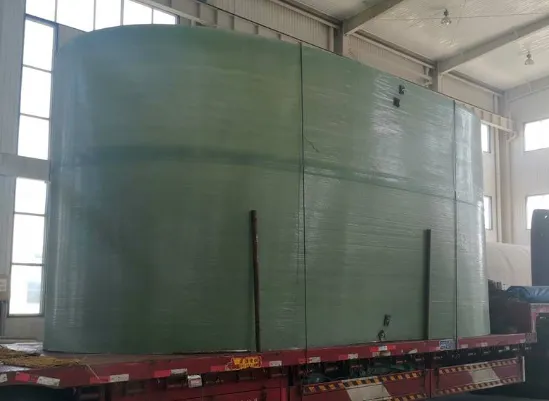
-
 Afrikaans
Afrikaans -
 Albanian
Albanian -
 Amharic
Amharic -
 Arabic
Arabic -
 Armenian
Armenian -
 Azerbaijani
Azerbaijani -
 Basque
Basque -
 Belarusian
Belarusian -
 Bengali
Bengali -
 Bosnian
Bosnian -
 Bulgarian
Bulgarian -
 Catalan
Catalan -
 Cebuano
Cebuano -
 China
China -
 China (Taiwan)
China (Taiwan) -
 Corsican
Corsican -
 Croatian
Croatian -
 Czech
Czech -
 Danish
Danish -
 Dutch
Dutch -
 English
English -
 Esperanto
Esperanto -
 Estonian
Estonian -
 Finnish
Finnish -
 French
French -
 Frisian
Frisian -
 Galician
Galician -
 Georgian
Georgian -
 German
German -
 Greek
Greek -
 Gujarati
Gujarati -
 Haitian Creole
Haitian Creole -
 hausa
hausa -
 hawaiian
hawaiian -
 Hebrew
Hebrew -
 Hindi
Hindi -
 Miao
Miao -
 Hungarian
Hungarian -
 Icelandic
Icelandic -
 igbo
igbo -
 Indonesian
Indonesian -
 irish
irish -
 Italian
Italian -
 Japanese
Japanese -
 Javanese
Javanese -
 Kannada
Kannada -
 kazakh
kazakh -
 Khmer
Khmer -
 Rwandese
Rwandese -
 Korean
Korean -
 Kurdish
Kurdish -
 Kyrgyz
Kyrgyz -
 Lao
Lao -
 Latin
Latin -
 Latvian
Latvian -
 Lithuanian
Lithuanian -
 Luxembourgish
Luxembourgish -
 Macedonian
Macedonian -
 Malgashi
Malgashi -
 Malay
Malay -
 Malayalam
Malayalam -
 Maltese
Maltese -
 Maori
Maori -
 Marathi
Marathi -
 Mongolian
Mongolian -
 Myanmar
Myanmar -
 Nepali
Nepali -
 Norwegian
Norwegian -
 Norwegian
Norwegian -
 Occitan
Occitan -
 Pashto
Pashto -
 Persian
Persian -
 Polish
Polish -
 Portuguese
Portuguese -
 Punjabi
Punjabi -
 Romanian
Romanian -
 Russian
Russian -
 Samoan
Samoan -
 Scottish Gaelic
Scottish Gaelic -
 Serbian
Serbian -
 Sesotho
Sesotho -
 Shona
Shona -
 Sindhi
Sindhi -
 Sinhala
Sinhala -
 Slovak
Slovak -
 Slovenian
Slovenian -
 Somali
Somali -
 Spanish
Spanish -
 Sundanese
Sundanese -
 Swahili
Swahili -
 Swedish
Swedish -
 Tagalog
Tagalog -
 Tajik
Tajik -
 Tamil
Tamil -
 Tatar
Tatar -
 Telugu
Telugu -
 Thai
Thai -
 Turkish
Turkish -
 Turkmen
Turkmen -
 Ukrainian
Ukrainian -
 Urdu
Urdu -
 Uighur
Uighur -
 Uzbek
Uzbek -
 Vietnamese
Vietnamese -
 Welsh
Welsh -
 Bantu
Bantu -
 Yiddish
Yiddish -
 Yoruba
Yoruba -
 Zulu
Zulu
Feb . 12, 2025 12:40
Back to list
Covers
In an era where technology transforms rapidly, Fiberglass Reinforced Plastic (FRP) remains a critical component in industrial applications due to its superior strength-to-weight ratio, resistance to corrosion, and durability. However, one of the major challenges associated with FRP is its cleaning and maintenance, particularly in the laundering process. This often involves complicated steps, requiring efficient methods to streamline these procedures to ensure both cost-effectiveness and product longevity.
Moreover, collaboration with material scientists can contribute to the development of FRP blends that incorporate self-cleaning properties. Using photocatalytic coatings, such as titanium dioxide, on FRP surfaces can harness natural sunlight to break down organic contaminants. This innovative approach can reduce the necessity of frequent laundering, conserving resources and extending the life of FRP products. Establishing a reliable benchmark for quality control is another essential aspect. By using non-destructive testing methods like neutron radiography or digital holography after laundering, any subtle changes in the internal structure of the FRP can be identified, ensuring that laundering processes do not compromise the material's properties. The synergy of these approaches represents a significant leap towards achieving a systematic and efficient FRP laundering process. Organizations must prioritize innovation and quality assurance to maintain competitiveness in the materials industry. By investing in cutting-edge technology and sustainable practices, companies not only enhance their operations but also strengthen their reputation as industry leaders committed to excellence. In conclusion, streamlining FRP laundering methods requires a multi-faceted approach that combines the latest technological advancements, environmental responsibility, and expert personnel training. This comprehensive strategy ensures that FRP materials remain a vital, resilient option in industrial applications, meeting the growing demands for sustainability and efficiency in today’s market.


Moreover, collaboration with material scientists can contribute to the development of FRP blends that incorporate self-cleaning properties. Using photocatalytic coatings, such as titanium dioxide, on FRP surfaces can harness natural sunlight to break down organic contaminants. This innovative approach can reduce the necessity of frequent laundering, conserving resources and extending the life of FRP products. Establishing a reliable benchmark for quality control is another essential aspect. By using non-destructive testing methods like neutron radiography or digital holography after laundering, any subtle changes in the internal structure of the FRP can be identified, ensuring that laundering processes do not compromise the material's properties. The synergy of these approaches represents a significant leap towards achieving a systematic and efficient FRP laundering process. Organizations must prioritize innovation and quality assurance to maintain competitiveness in the materials industry. By investing in cutting-edge technology and sustainable practices, companies not only enhance their operations but also strengthen their reputation as industry leaders committed to excellence. In conclusion, streamlining FRP laundering methods requires a multi-faceted approach that combines the latest technological advancements, environmental responsibility, and expert personnel training. This comprehensive strategy ensures that FRP materials remain a vital, resilient option in industrial applications, meeting the growing demands for sustainability and efficiency in today’s market.
Next:
Related Products









